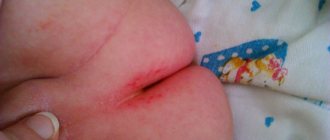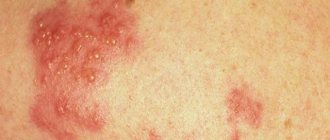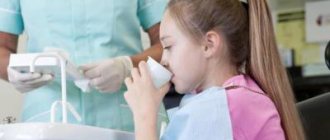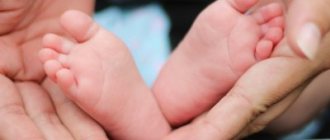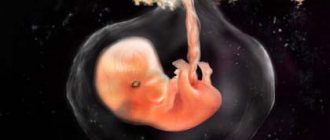Causes of itching on the stomach
Itching in the abdomen is one of the common phenomena. This process can be both physiological and pathological in nature.
If there is itching in the lower abdomen, the reasons may be as follows.
- Allergic manifestations. Allergies are accompanied not only by the development of scabies and the appearance of rashes on the skin. In addition, the patient complains of lethargy, drowsiness, and tearfulness. Wool, dust, pollen, medications, food, and household chemicals can act as irritants.
- The occurrence of psoriasis. The first symptom of the onset of the disease is a specific rash on the skin. The causes of psoriasis are prolonged stressful situations, emotional stress, and poor nutrition. The patient has severe itching on the sides of the abdomen. The skin begins to peel off. If left untreated, pimples spread throughout the body.
- Herpes infection. When the lower abdomen itches and a rash appears on the back, then it is customary to talk about shingles. Bubbles with transparent contents form on the skin.
- The occurrence of scabies. If a small red rash appears in the abdominal area, then it is customary to talk about scabies. The disease spreads throughout the entire skin and affects the chest area, fingers and toes. Unpleasant symptoms are accompanied by severe itching, which intensifies at night.
- Syphilis of secondary type. Bubbles may vary in size. In appearance, they resemble small nodules or extensive wounds.
If the lower abdomen itches, it is necessary to conduct an examination. If rashes of varying sizes are detected, you should urgently call a doctor at home.
Why does a child's palms or feet itch?
The resulting discomfort prevents children from sleeping and staying awake. To eliminate itching of the feet and palms, it is necessary to determine the cause. These can be both everyday factors and serious pathologies of various types.
Enterovirus infection
The skin disease is characterized by redness in different parts of the body. The lesion is primarily noticeable on the upper torso and arms. Hyperemia does not protrude above the surface. Sometimes the palms and feet become covered with small blisters, which burst within a week, leaving pigment spots. Over time, the symptoms disappear without a trace.
Allergic diseases
Rashes in a baby, accompanied by severe itching, may be the result of contact with an allergen. This clinical picture is caused by various factors:
- Food. An allergy to any food is possible. First of all, you need to analyze changes in the diet, exclude new foods and observe the reaction. An allergy may also arise from an oversaturation of certain components of dishes that were constantly present on the baby’s menu and were well accepted by the body.
- Medicines. When taking medications, a child’s palms often itch, turn red, and become covered with blisters. You must inform your doctor about this so that he can prescribe a different course of treatment or adjust the therapy by selecting an additional antihistamine.
- External stimuli. In summer, a rash and itching on the palms may occur when picking berries and flowers. Baby's feet become red and itchy after walking on hot sand at the beach or barefoot on the grass. In winter, discomfort remains for several days after the hands or feet are frozen. A common irritant is household chemicals. A child’s feet itch severely if socks or tights are not rinsed well. The discomfort is more noticeable if your feet are sweaty.
- Disturbances in the operation of internal systems. Atopic dermatitis manifests itself as severe itching for no apparent reason. This may be a decrease in immunity, or the occurrence of diseases in a latent form.
If you have chronic itching, you need to undergo a full examination so that your doctor can prescribe treatment to get rid of the underlying cause. Only in this case will the fight against its symptoms be successful.
Fungal infection
If the skin flakes, flakes and itches very much, itching appears between the fingers and throughout the palm and foot, it could be a fungus. When neglected, the skin on the heels cracks. Fungal microorganisms contribute to the accumulation of toxins, which provokes the development of other diseases.
Scabies
Infection with parasites can be identified by severe itching and the presence of paired small nodules. This is the entrance and exit of the scabies mite tunnel that it makes under the skin. The child's palms itch more at night.
Irritation is caused both by the parasites themselves and by their metabolic products. If treatment is not started immediately, the infection will spread throughout the body.
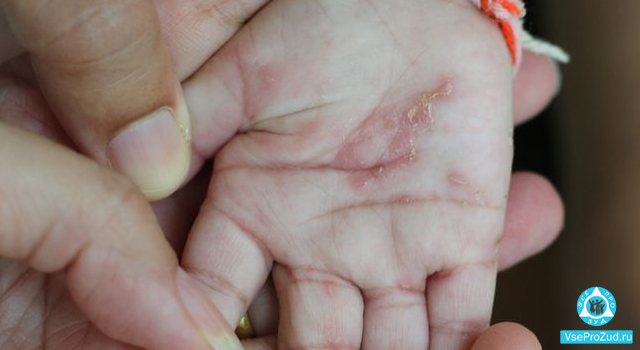
Avitaminosis
The lack of useful components is characterized by increased dryness and itching of the feet and palms. Hands and feet become cold, tongue red and dry.
The most detrimental effect on the baby's condition is a deficiency of B vitamins.
Dyshidrotic eczema and dyshidrosis
The diseases have not been thoroughly studied. Doctors believe that they are provoked by nervous shock, problems with the immune and endocrine systems, excessive sweating, a tendency to allergies, and disruption of the sebaceous glands.
At first, the baby is bothered by strong tingling sensations, and only after a few days watery blisters appear on the palms of the hands and feet.
Other reasons
All body systems in a child are more sensitive than in an adult, so discomfort can be caused by various factors:
- Non-infectious skin diseases are characterized by severe itching. These are psoriasis, eczema, dermatitis. Pathologies are difficult to treat and after remission they can worsen again. Provoking factors are hereditary predisposition, allergies, food poisoning, low immunity.
- The child’s feet and palms are flaky and itchy due to worms. In the absence of other reasons, it is necessary to undergo tests to determine parasites.
- Without accompanying symptoms, palms itch due to lymphatic diseases. This mainly occurs when the number of platelets decreases and blood clotting deteriorates.
The same discomfort is caused by burns, injuries, and insect bites.
Itching during pregnancy
Very often, when visiting a doctor, expectant mothers complain of itching in the abdominal area. Why does this phenomenon occur? According to statistics, most women in the first and third trimester begin to itch the lower and sides of the abdomen.
There is no particular reason for concern, since this process appears as a result of the active growth of the tummy. This indicates that the skin is gradually stretching. After the baby is born, everything will return to its place, but the stretch marks may remain.
All expectant mothers at the gestation stage experience an uncomfortable feeling while wearing synthetic and woolen products and using cosmetics. But don't relax. Perhaps the reason lies in the presence of diseases.
Itching in the lower abdomen in women can occur for pathological reasons. This group includes:
- cholecystitis, hepatitis and other types of liver damage. In this case, not only the stomach will itch, but also the arms, legs, chest, and back;
- cholestasis. This condition is considered dangerous for both mother and baby. This group should include women who have problems with the liver or kidneys. The disease can also develop in expectant mothers with multiple pregnancies. With cholestasis, a tooth is noted in the area of the hands, palms and abdomen;
- allergic manifestations. Even if a woman has never suffered from allergies, it is during pregnancy that the body can become susceptible to any irritant. The most common allergens are dairy products, citrus fruits and seafood.
If your stomach itches during pregnancy, it is better to tell your doctor about it. Often the reasons are harmless, because expectant mothers regularly undergo various tests.
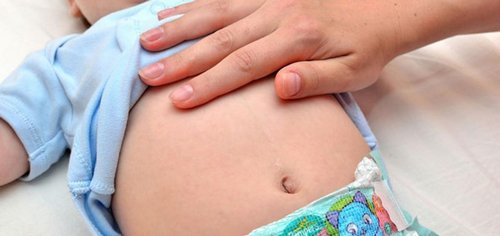
Severe itching of the skin in a child
An expert explains why a child may experience itchy skin.
Itchy skin is a common cause of discomfort and sleep disturbance in children. In most cases, the cause can be determined by a doctor upon examination. Treatment largely depends on the cause of the itching.
Roman Shiyan, a pediatrician at the DocDeti evidence-based medicine children's clinic, explains what are the most common causes of itching in children, what symptoms parents should pay attention to, and how to deal with it.
Roman Shiyan
Atopic dermatitis
Atopic dermatitis is the most common skin disease in children.
Its main cause is a violation of the skin barrier function. Research shows that many children with atopic dermatitis have features of the gene encoding the protein filaggrin, which is involved in regulating skin cell development, its barrier function, prevents dehydration and regulates immune responses in the skin.
The first symptoms most often appear before the age of 1 year.
The main symptoms are dry skin and itching. Periodically, rashes appear in areas of scratching and severe dry skin.
Factors that increase skin itching and scratching may include:
- low air humidity,
- increased sweating,
- exposure to certain irritants on the skin (soaps, cosmetics, fragrances, detergents, wool, acrylic),
- food allergens (cow's milk, chicken eggs, peanuts, soybeans, tree nuts, wheat, seafood),
- household allergens (house dust mites),
- skin infections.
Treatment of atopic dermatitis involves proper skin care. For this purpose, special means are used - emollients. Early use of them restores the barrier function of the skin and reduces the risk of developing allergies.
In case of a pronounced inflammatory reaction, local hormonal anti-inflammatory drugs are used in short courses.
For severe skin itching, antihistamines with a sedative effect can be temporarily used.
Allergies are not the main cause of this disease, so most children with atopic dermatitis and their mothers do not need any special diet.
The connection between atopic dermatitis and the characteristics of the intestinal microflora has not been proven. The effectiveness of various drugs containing beneficial bacteria is questionable.
Hives
One in five people will experience hives at least once in their life. With urticaria, itchy, flat, raised red blisters appear, turning pale when pressed and looking like a nettle burn.
Urticaria occurs as a result of vasodilation and increased vascular permeability of the skin, which leads to swelling of its upper layers.
The reasons for this may be an allergic reaction to food, medications, or insect stings.
Eating large amounts of certain foods can cause hives even in people without allergies.
Such products include many delicacies from the New Year's table (citrus fruits, pineapples, strawberries, bananas, chocolate, tomatoes, spices).
In addition, such a reaction can occur in response to certain food additives: sulfites, sodium benzoate, some dyes.
Causes of itching in children
Stomach itching also occurs in children. The first reason is an allergic reaction to formula, breast milk, food products that the mother eats, and complementary foods. Rashes and itching can appear absolutely anywhere.
The appearance of heat rash should not be ruled out. This phenomenon is accompanied by a small rash. Most often observed in the summer heat. Red pimples appear in the neck, abdomen, and butt area. To avoid excessive irritation to children's delicate skin, it is necessary to avoid contact with wet and wet underwear and diapers.
Rashes on the skin and itching are accompanied by an insidious disease in the form of measles. Its main difference is the appearance of dark-colored spots. In addition to all this, the baby’s body temperature rises and peeling occurs.
The abdomen may develop a rash on the sides due to scarlet fever. In this case, the groin area is also affected. The disease is accompanied by a small rash, which gradually begins to merge.
Chickenpox is often the cause of itching in childhood. Your body temperature may also rise, your throat may become red and you may have a runny nose. First, small rashes appear on the skin. After a few days they fill with clear liquid.
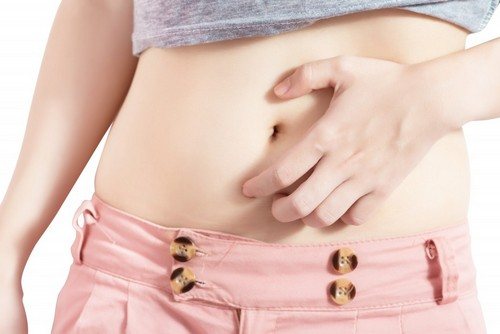
What can cause itching
If a child’s body itches without a rash, then we can assume one of
Child hygiene is the key to his health
the following reasons:
- The most common cause in childhood is poor hygiene. This may include infrequent and careless washing of the body, hands, head, etc.
- Allergic reaction to external irritants. These can be not only food allergens, but also fabric, detergent, pet, etc. Itching may be accompanied by a runny nose, cough, and sometimes even a skin rash.
- The most serious cause of itching in a child is disturbances in the functioning of internal organs and systems. To identify such diseases, it is necessary to pay attention to the signs accompanying them.
Psychological causes of itching
Itching on the skin is not always associated with any disease or external influence. Sometimes a child's body itches without a rash due to a psychological disorder. Due to stressful, new, frightening situations or moments, neurodermatitis may appear. This is a psychosomatic disease that manifests itself without rash, fever or other external signs. When under stress, a child may begin to scratch a certain area of his body due to severe itching. Sometimes it itches so much that it can leave abrasions or blood.
In such situations, it is necessary to provide psychological assistance to the child: to create the most comfortable and calm atmosphere around him.
Infectious diseases
Very often, a child’s entire body itches due to infectious diseases. For example, it could be measles, chicken pox or shingles, rubella, etc. After the itching, a rash and red spots appear all over the body, which do not go away until the end of the disease. Usually the rash on the child’s body is itchy without fever, but sometimes it can rise. It is important not to let your child scratch the rash to avoid later scars on the skin.
Skin diseases accompanied by itching
Sometimes you may encounter the problem that a child’s rash itches without fever.
At the same time, its localization is very clear, and its appearance is non-standard.
If a child’s body itches, it is necessary to immediately determine the possible causes of the itching. Additional symptoms will help with this, as well as an analysis of previous situations in the child’s life.
Itching in the anal area brings significant discomfort to the child. The reasons for its appearance can be quite serious, ranging from helminthiasis to an allergic reaction. Therefore, parents should consult a doctor before starting treatment. Only a specialist will be able to determine the true cause of the child’s appearance.
Therapeutic measures for itching
It doesn’t matter who has itching: a woman, a man, a child. You need to urgently call a doctor at home. He will conduct an examination and find out the presence of concomitant diseases. Usually the diagnosis can be made immediately.
If the cause is allergic reactions, then it is necessary to identify the irritants and stop contact with them. Antihistamines are also prescribed to relieve unpleasant symptoms such as itching and redness. Such means include:
- tablets Suprastin, Claritin, Tavegil;
- Fenistil ointment;
- drops Zodak, Zyrtec, Fenistil, Suprastin Next.
When scabies develops, treatment measures are carried out for all family members. Therapy lasts at least two to three weeks. At the same time, the apartment, belongings and bed linen are disinfected. Treatment involves taking medications based on benzyl benzoate and exdepalletrin.
Treating itching with folk remedies
If the cause is harmless, then folk remedies will help eliminate it. Their advantage is that they are safe and do not cause allergic reactions.
- First way. You can relieve itching on the skin in the abdominal area using herbal decoctions. To make them, you can use nettle, licorice, burdock, chamomile, and valerian. All herbs must be dried.
Take one spoon of the plant and pour a mug of boiled water. Let sit for approximately 15-20 minutes. Strain and cool. Soak the disc in the cool infusion and wipe the itchy area.Ice made from herbs has a good effect. This will help quickly remove the unpleasant symptom at night.
- Second way. Review your diet. To remove itching, it is enough to include in your diet foods that are rich in vitamin A. This includes sea buckthorn and sea buckthorn oil, pumpkin seeds.
- Third way.
You can get rid of the uncomfortable feeling using compresses based on aloe or Kalanchoe juice. This will require two leaves of the plant. Grind them on a grater, and then squeeze out the juice using gauze. Soak a cotton pad in the resulting solution and apply to the area of the rash.
Itching can be pathological or physiological. But if it is accompanied by a rash, then it is better to consult a doctor as soon as possible. He will make an accurate diagnosis and prescribe treatment.





